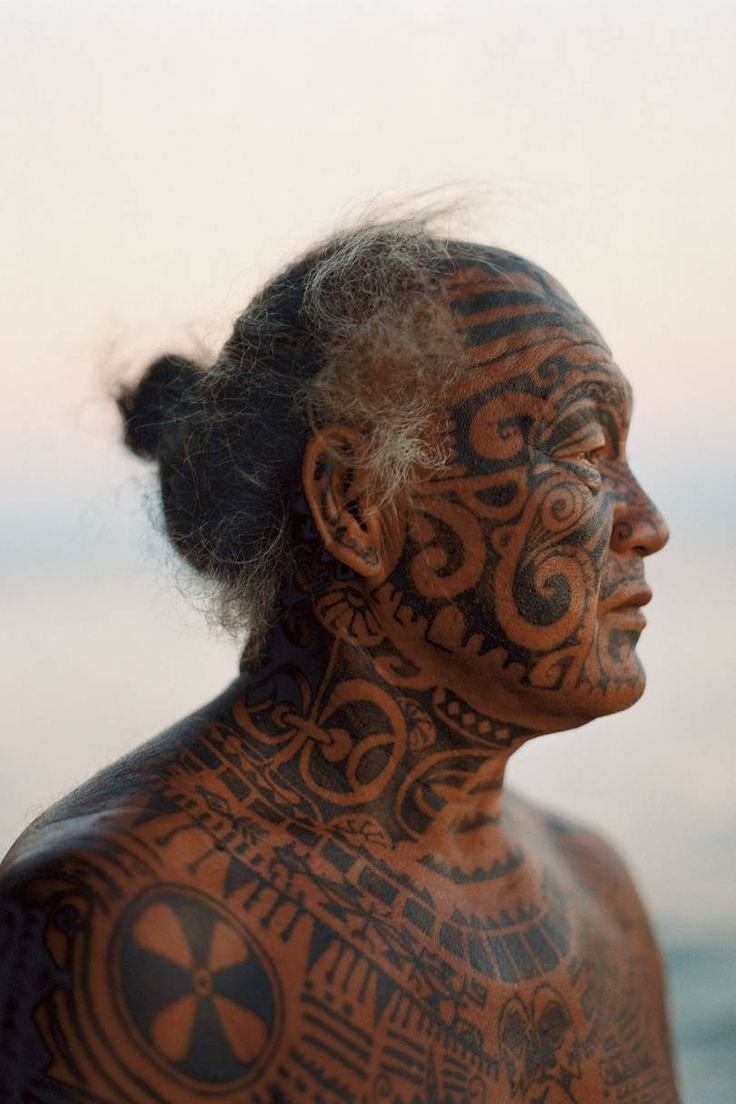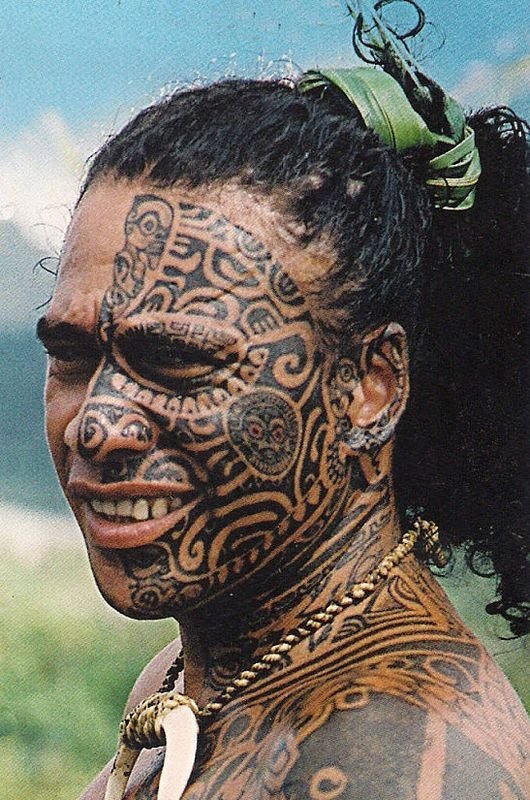Polynesian Pride: The Cultural Significance of Tribal Tattoos
The Origins of Polynesian Tattoos: A Historical Journey
Unearthing Ancient Traditions
The rich history of Polynesian tattoos dates back to 2000 BC. Archaeological records show the earliest evidence of these tattoos across various islands. It’s astonishing to think that something so personal has been practiced for thousands of years. What drove people to etch their stories onto their skin? As you dive deeper, it becomes clear that tattoos were significant markers of identity.
Significance of Tattoos
Social Status: Tattoos often indicated a person’s social standing. Different patterns and designs represented various ranks within the tribe.
Bravery: Achievements in battle or life experiences were visually portrayed through tattoo art.
Connection to Ancestry: Many tattoos symbolize links to ancient ancestors, a visual representation of lineage.
More Than Just Art
These tattoos served a purpose beyond aesthetics. They formed a crucial part of the cultural identity across the islands. What does it mean to have a connection to one's ancestors? Polynesian tattoos answer that question. Each design is a story—an homage to the past and a link to spiritual beliefs.
Across different island cultures, tattoos held spiritual significance. They were not mere decorations; they were believed to carry mana, a spiritual force that provided protection and strength. As noted by John Kaimiloa, a Polynesian artist:
"Tattoos are a reflection of one’s identity, a way to honor our ancestors and our journeys."
Cultural Variations
Interestingly, every island has distinct tattooing practices and styles. For example, in Samoa, intricate geometrical patterns dominate, while the Marquesas Islands favor bold, stylized images. These differences highlight the diversity of Polynesian tattoo culture.
cntraveller.com
Symbols and Meanings: More Than Just Ink
Tattoos tell stories. They are not just designs on skin; they communicate personal journeys, cultural roots, and shared beliefs. In Polynesian culture, symbols carry profound meanings. Let's explore some common motifs and their significance, along with how colors and patterns help convey messages.
Common Motifs and Their Significance
Turtle: Representing longevity, the turtle connects to life's journey and the wisdom that comes with age.
Shark: This symbol stands for strength, showcasing resilience and courage in the face of challenges.
Each tattoo can reflect an individual's perspective or larger communal narratives. For example, a shark tattoo might mean something personal to the wearer, but in a broader context, it symbolizes the spirit of the tribe. It’s fascinating how one symbol can carry multiple layers of meaning.
Personal Versus Communal Stories in Tattoos
One tattoo might echo the wearer's unique life experiences. Another might represent the shared values of a community. Tattoos form a bridge between individual identity and collective heritage. This dual nature enriches the experience for both the wearer and those who recognize the symbols.
The Role of Color and Patterns
Colors and patterns play a vital role in tattoo design. Different colors can evoke emotions or signify different meanings. Similarly, patterns can vary between tribes, often signifying various life stages or achievements. Take a moment to consider:
"Every stroke carries a tale, a memory, a dream." - Marie Tavita, tattoo historian
This quote perfectly encapsulates the essence of tattoo art in Polynesian culture. Each element, whether color or design, holds significance that transcends mere aesthetics.
Tattooing Techniques: Artistry and Tradition
Traditional Methods vs. Modern Practices
Tattooing has evolved over the years, but its roots remain deeply embedded in tradition. Traditional methods often involve hand-tapped techniques, where the artist uses tools made from natural materials.
Modern practices? They introduce electric machines that allow for enhanced precision and speed. However, the essence of tattooing is not solely in the tools used; it lies in the skill of the artist. Many artists today seamlessly blend traditional techniques with modern innovations, creating a unique artwork.
The Importance of the Artist’s Skill and Lineage
In the world of tattooing, the artist’s lineage plays a crucial role. Each tattoo is not just an inked design; it’s a piece of history, a story passed down through generations.
Skill development: Artistic talent is cultivated over time.
Cultural heritage: Tattoos signify traditions unique to different cultures.
Rite of passage: Lani Niu, a renowned tattoo artist, emphasizes:
"The process itself is as significant as the tattoo itself; it’s a rite of passage."
For many, getting a tattoo is a way to connect with their ancestry, paying homage to art forms that have shaped their identity.
Cultural Rituals Surrounding Tattooing
Tattooing is often more than just art; it’s a sacred rite. Across various cultures, rituals can span from a few hours to several days, creating a deep, memorable experience. For instance, Polynesian tattooing holds profound significance. It is a sacrament that reflects cultural stories and the lineage of the tattoo artist.
Moreover, the pain endured during the process is often seen as a badge of honor. This shows strength and commitment to the journey.
Interestingly, tattooing tools vary significantly from family to family. Each artist may have unique tools that reflect their heritage and personal style. This diversity highlights the evolution of tattooing as both an art form and a cultural practice.
Conclusion
The world of tattooing is rich with history, artistry, and profound meaning. It continues to thrive as artists redefine and innovate within this cherished tradition.
Contemporary Relevance: Tattoos in Modern Polynesian Culture
Embracing Heritage
Tattoos have transcended their role as mere body art to become powerful statements of identity. Younger generations are increasingly embracing their Polynesian heritage through tattoos. These marks do more than decorate the skin; they tell stories of culture, tradition, and ancestry. For many, a tattoo represents a connection to one’s roots.
Why are tattoos so significant? It’s simple: they connect individuals to their history while allowing them to express who they are today. The designs often showcase intricate patterns inspired by Polynesian mythology, which are rich in symbolism. Common motifs might include turtles, waves, and tribal lines, each holding deep meaning.
The Rise of Tattoo Conventions
Tattoo conventions have seen a dramatic rise in popularity, showcasing artistry from across the globe.
Over the last decade, participation in tattoo festivals has increased by over 200%.
These events celebrate Polynesian culture, featuring local artists and traditional tattooing techniques.
At these conventions, attendees not only admire the artwork but also engage in discussions about their cultural significance. It's a melting pot of creativity and tradition, fostering a sense of community among tattoo enthusiasts.
Social Media's Role
In today’s digital age, social media has becoming an invaluable tool for cultural exchange. Platforms like Instagram and TikTok help spread cultural narratives far and wide. Hashtags connect like-minded individuals eager to learn and share, creating a global dialogue about Polynesian tattoos.
Online discussions have greatly expanded awareness of these tattoos. They showcase not just the beauty of the art but the rich heritage behind each design. As Aloha Keanu, a cultural advocate, poignantly puts it,
“Our ink tells stories globally, building bridges over oceans.”
Tattoos today are more than skin deep. They are powerful symbols of identity, reflecting a generation’s desire to maintain a connection to their roots while embracing modernity. As Polynesian tattoo culture flourishes, it continues to inspire and educate those around the world.
Connecting to Polynesian Roots
Tattoos in Polynesian culture carry deep significance. They connect individuals to their ancestry. In many Polynesian communities, the average age of receiving a first tattoo is between 18 and 25 years. This age marks a transition into adulthood.
Polynesian tattoos often symbolize honor and family ties. They act as visual representations of one’s heritage. Jamie Losa beautifully articulated this connection in saying,
"My tattoos are not just art; they are bridges to my entire lineage."
Each design serves as a reminder of who they are and where they come from.
Conclusion
Tattoos are powerful symbols of personal identity and cultural connection. They tell stories that go beyond mere aesthetics. Through the ink, individuals express their past, present, and future. Each tattoo journey is unique, yet they resonate with universal themes of love and resilience. This relationship between ink and identity continues to foster a sense of belonging and continuity. It reminds us that we are all connected through our stories and our bodies.


